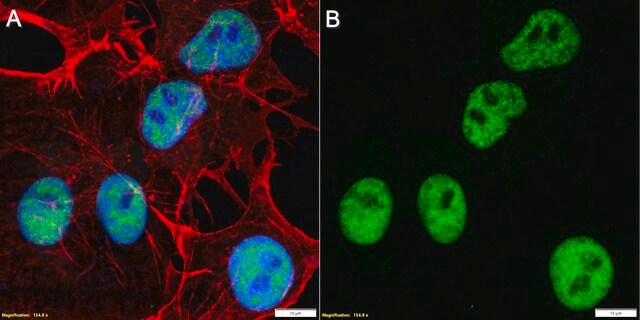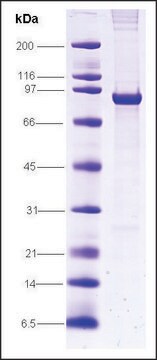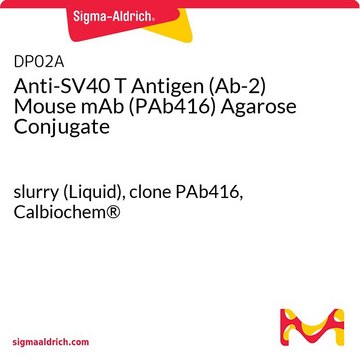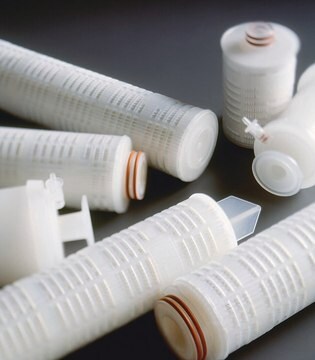DP02
Anti-SV40 T Antigen (Ab-2) Mouse mAb (PAb416)
liquid, clone PAb416, Calbiochem®
About This Item
Produtos recomendados
fonte biológica
mouse
Nível de qualidade
forma do anticorpo
purified antibody
tipo de produto de anticorpo
primary antibodies
clone
PAb416, monoclonal
forma
liquid
contém
≤0.1% sodium azide as preservative
reatividade de espécies
SV40-infected cells
fabricante/nome comercial
Calbiochem®
condição de armazenamento
do not freeze
Isotipo
IgG2a
Condições de expedição
wet ice
temperatura de armazenamento
2-8°C
modificação pós-traducional do alvo
unmodified
Descrição geral
Imunogênio
Aplicação
Immunoblotting (1-5 µg/ml, see application references)
Immunofluorescence (1-5 µg/ml)
Immunoprecipitation (1-5 µg antibody, use Cat. No. DP02A)
Paraffin Sections (see application references)
Embalagem
Advertência
forma física
Nota de análise
3T3 cells
SV80 or SV-T2 cells
Outras notas
Whyte, P., et al. 1988. Nature334, 124.
Mitchell, P.J., et al. 1987. Cell50, 847.
Dixon, R.A.F. and Nathans, D., 1985. J. Virol.53, 1001.
Simanis, V. and Lane, D.P. 1985. Virol.144, 88.
Mann, R.S. and Carroll, R.B. 1984. Virology138, 379.
Sarnow, P., et al. 1982. Cell28, 387.
Crawford, L.V., et al. 1981. Proc. Natl. Acad. Sci. USA78, 41.
Lane, D.P. and Crawford, L.V. 1979. Nature278, 261.
Carroll, R.B., et al. 1974. Proc. Natl. Acad. Sci. USA71, 3754.
Tooze, J. 1973. Cold Spring Harbor, New York.
Tegtmeyer, P. 1972. J. Virol.10, 591.
Informações legais
Não está encontrando o produto certo?
Experimente o nosso Ferramenta de seleção de produtos.
Código de classe de armazenamento
12 - Non Combustible Liquids
Classe de risco de água (WGK)
WGK 2
Ponto de fulgor (°F)
Not applicable
Ponto de fulgor (°C)
Not applicable
Certificados de análise (COA)
Busque Certificados de análise (COA) digitando o Número do Lote do produto. Os números de lote e remessa podem ser encontrados no rótulo de um produto após a palavra “Lot” ou “Batch”.
Já possui este produto?
Encontre a documentação dos produtos que você adquiriu recentemente na biblioteca de documentos.
Nossa equipe de cientistas tem experiência em todas as áreas de pesquisa, incluindo Life Sciences, ciência de materiais, síntese química, cromatografia, química analítica e muitas outras.
Entre em contato com a assistência técnica








